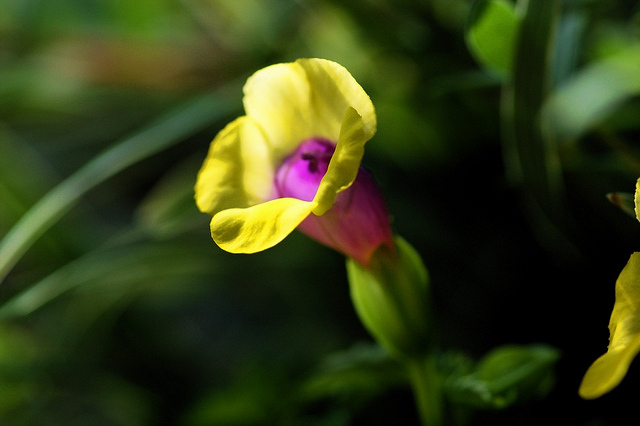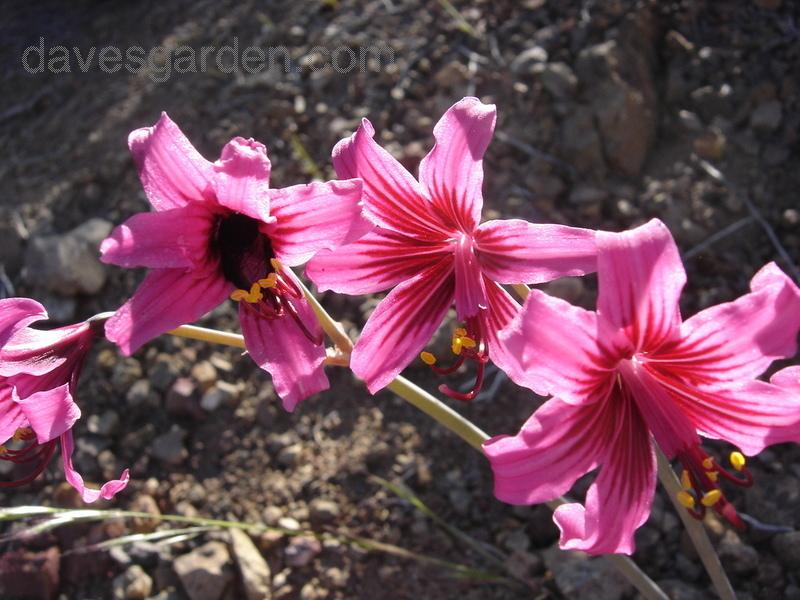|
This group consists of about 30 tropical perennials native to Costa Rica, Columbia, Brazil, Puerto Rico and the West Indies. These plants are popularly grown as houseplants because of their beautiful foliage; however, care must be taken, as they are very poisonous . Dumb Cane (the common name) is one of the easiest plants to grow. They have cane-like stems and can grow about 4 feet high. Their large leaves may be oval with pointed tips or long and narrow and their bases encircle the stems. Their colors also vary. Some have dark green leaves with creamy white markings, while others have dark green, light green, yellowish and white markings. Many of the fancy hybrids where developed from D. maculata and D. Seguine.
Note: Dumb Cane, as they are commonly known, are extremely poisonous if eaten. The bitter sap, which contains Calcium oxalate, burns the mouth and throat, causes the tongue to swell to the point that it can close your throat and cause suffocation, and can paralyze the vocal cords thus the common name. This can happen if even a small amount is ingested. Always wash your hands after handling this plant. If you have small children or pets who chew on houseplants you should avoid this one.
Pot Cultivation
Dumb Canes need a minimum temperature of 55� F, but prefer a range between 70� and 80� F during the day with a night temperature between 60° and 65° F. Grow them in a rich compost consisting of equal parts of peat and loam with one part well-decayed manure and coarse sand. They should be in a location that receives bright, indirect light. Allow the soil to become fairly dry between waterings and then give a good soaking. Established plants should be fed houseplant fertilizer diluted to half strength every few weeks during the spring and summer. Plants that are root bound can be repotted at any season. Clean the leaves with a damp sponge occasionally to prevent their pores from being clogged with dust. Mist the leaves frequently or set the container on a saucer of wet pebbles for humidity. Spider mites can be a problem with these plants. With age, the lower leaves die and fall off creating a tall, spindly plant. When this happens, the plant may be cut back to any height (new shoots will grow from the cane) and the cut portions used for propagation.
Propagation
As mentioned above, the cut portion may be used as a cutting and inserted in a propagating case to root. New shoots will also form from the base that the top was cut from. You can also cut up the stem into 2-inch pieces and lay them on sandy soil in a propagating case in the spring or summer where they will produce a shoot at every joint.
 |
 |
| D. fournieri |
D. amoena |
Varieties
- D. amoena;
- D. bausei;
- D. chelsonii;
- D. exotica (arvida);
- D. fournieri;
- D. fosteri;
- D. hoffmannii;
- D. imperialis;
- D. leonii;
- D. longispatha;
- D. memoria-corsii;
- D. parlatorei;
- D. picta;
- D. picta barraquiniana;
- D picta jenmannii;
- D picta Rudolph Roehrs;
- D. picta superba;
- D. seguine liturata (D. leopoldii);
- D. splendens;
- D. maculata;
- D. Seguine.
|